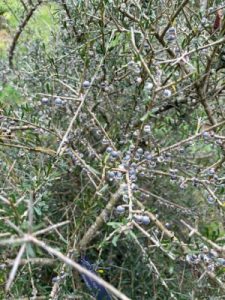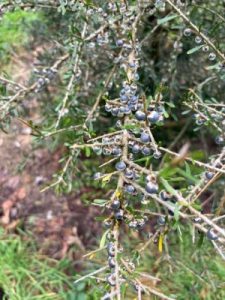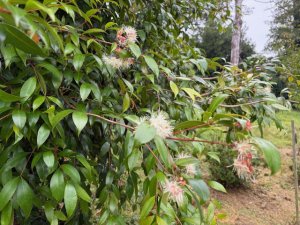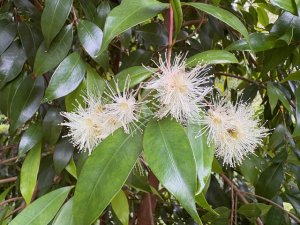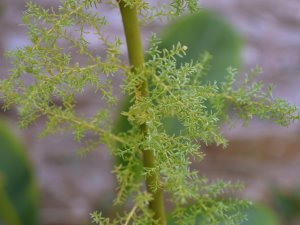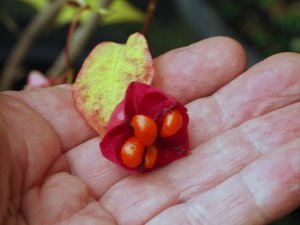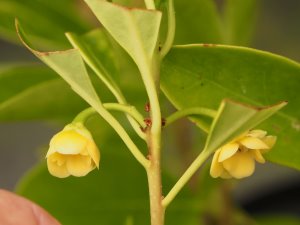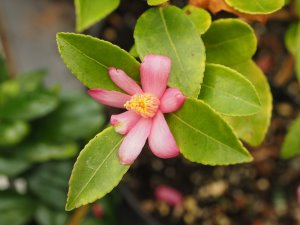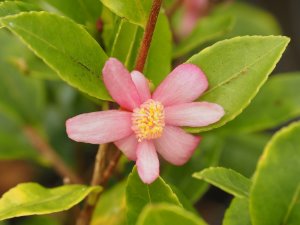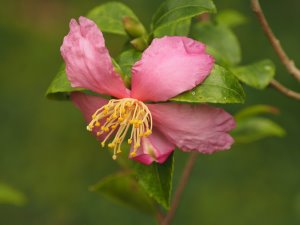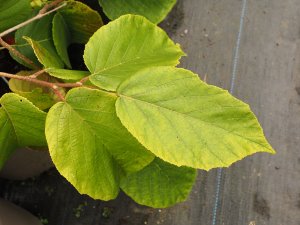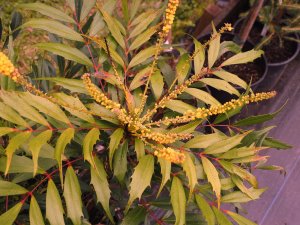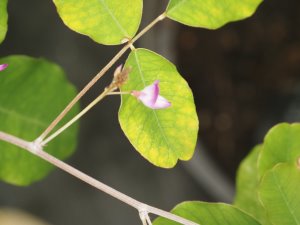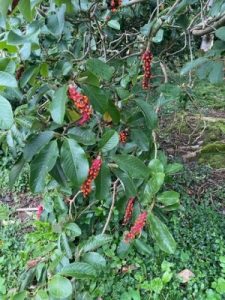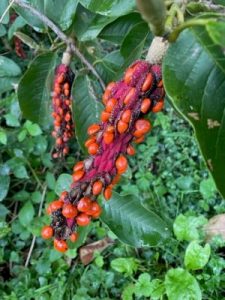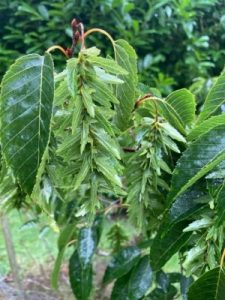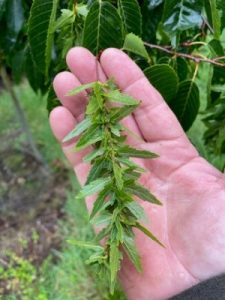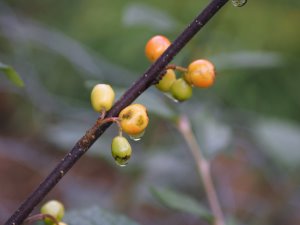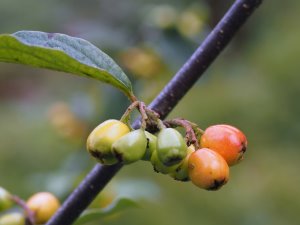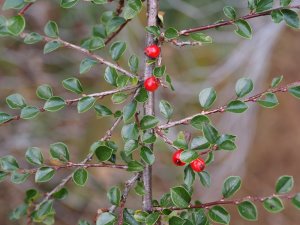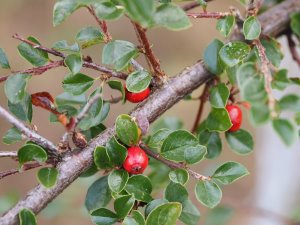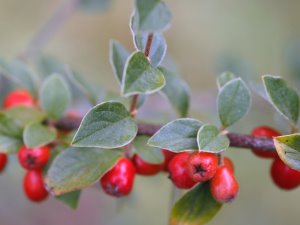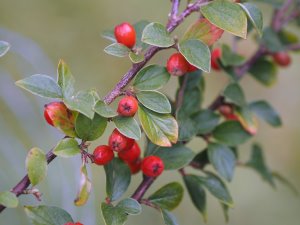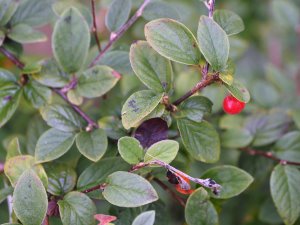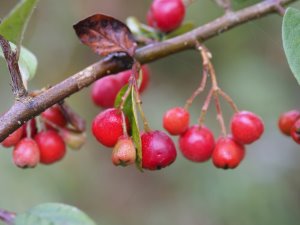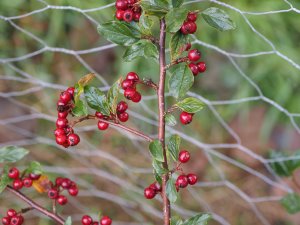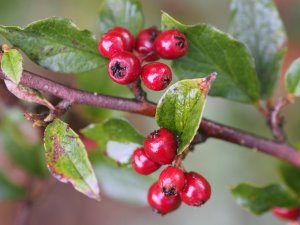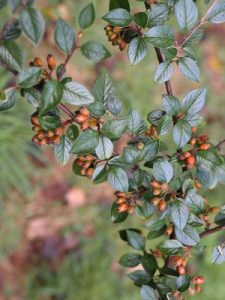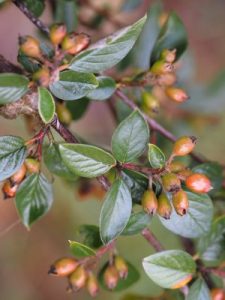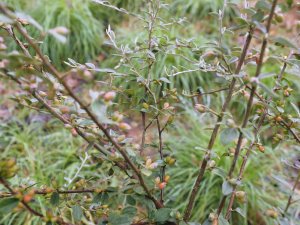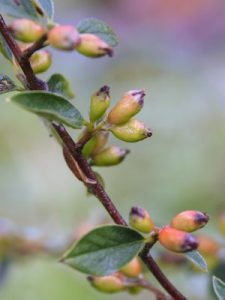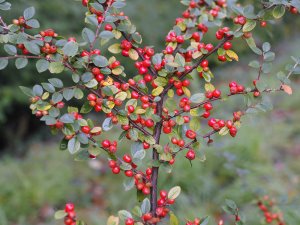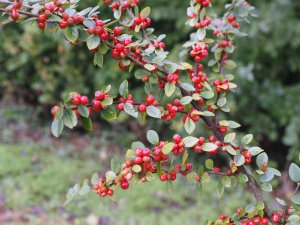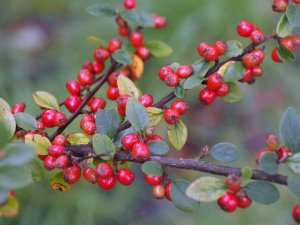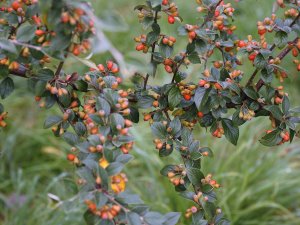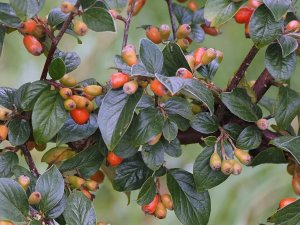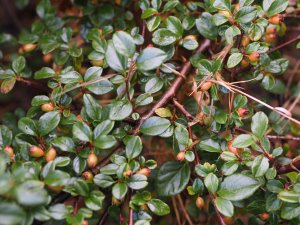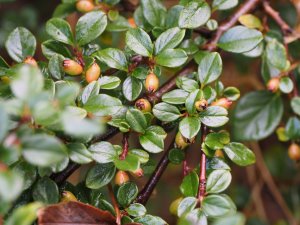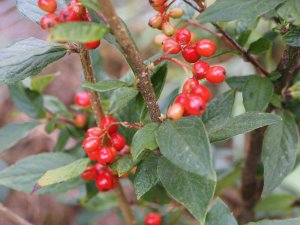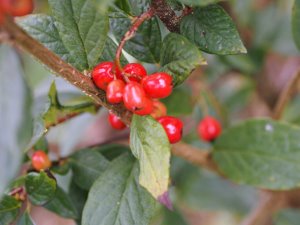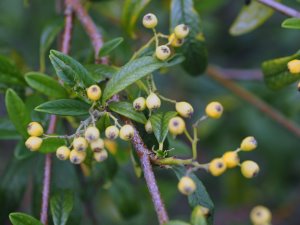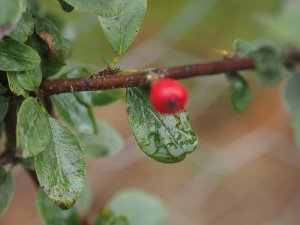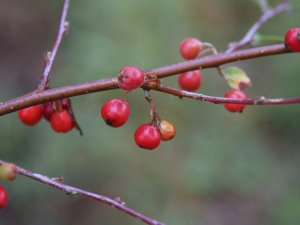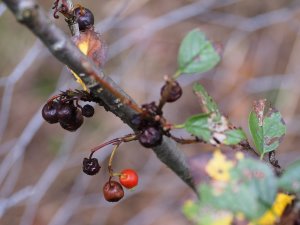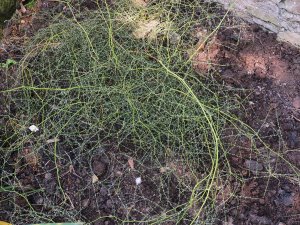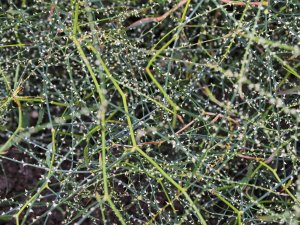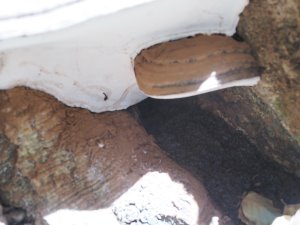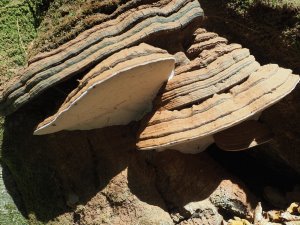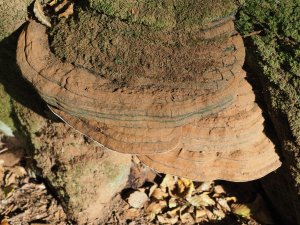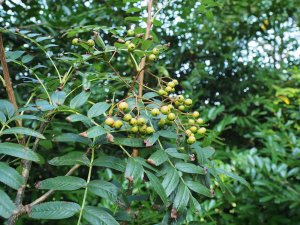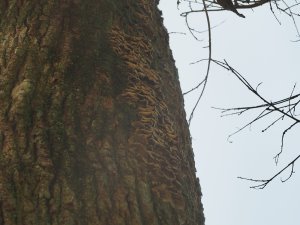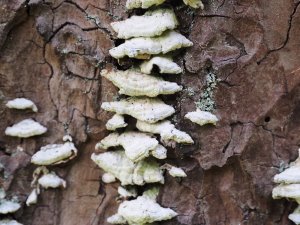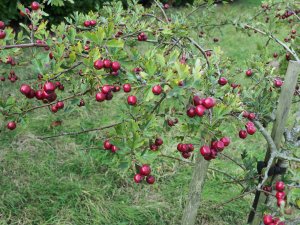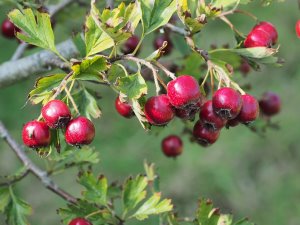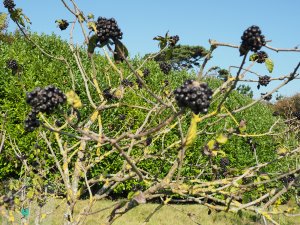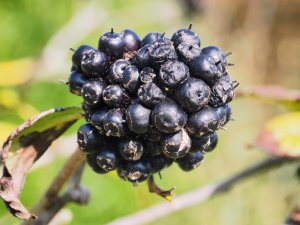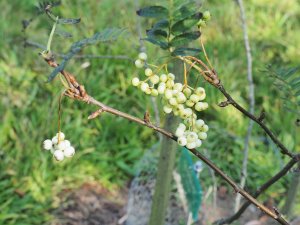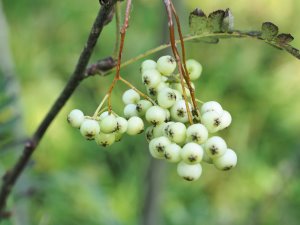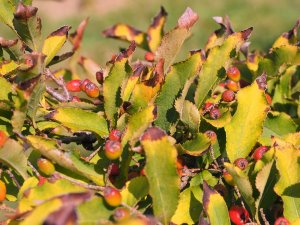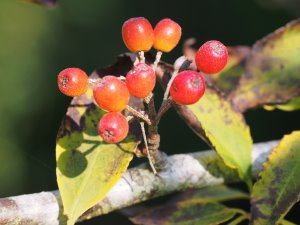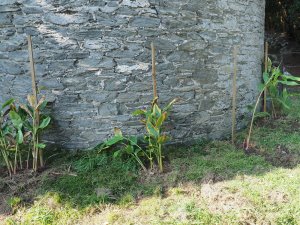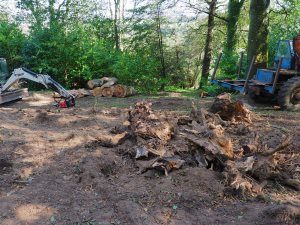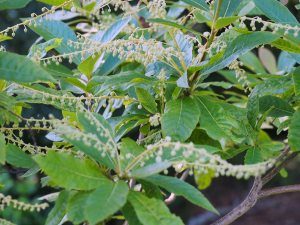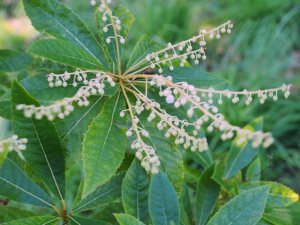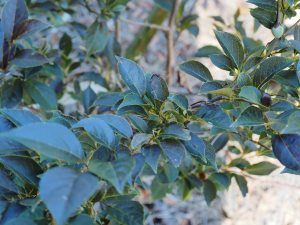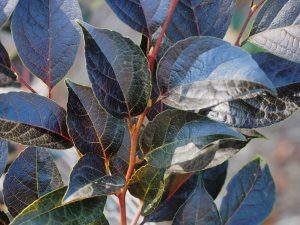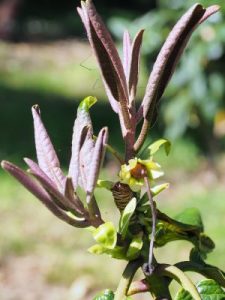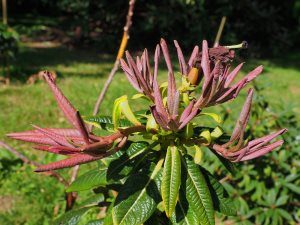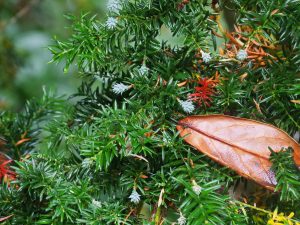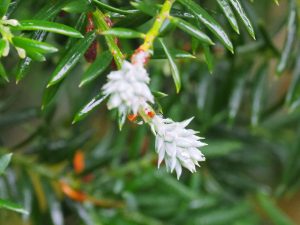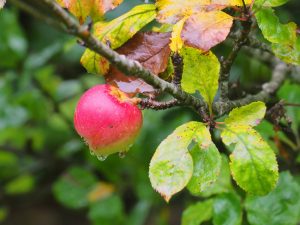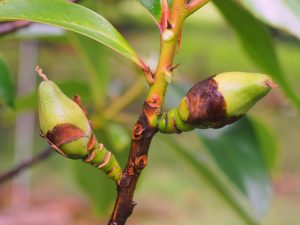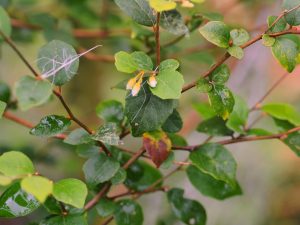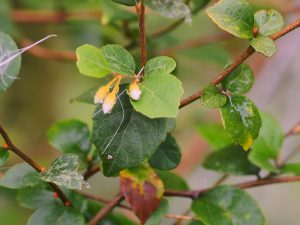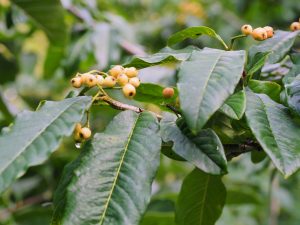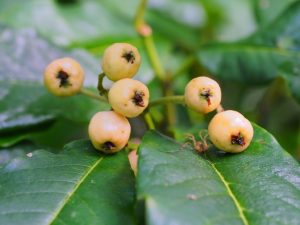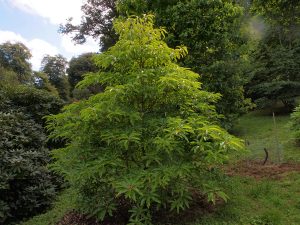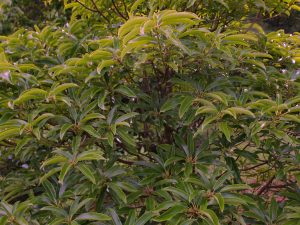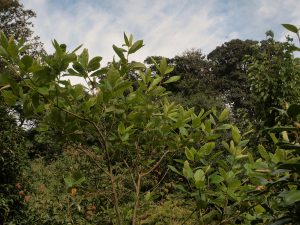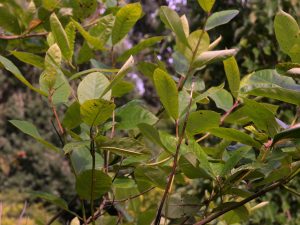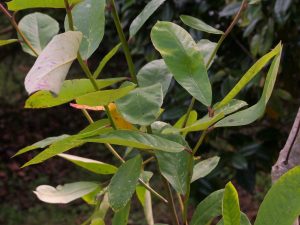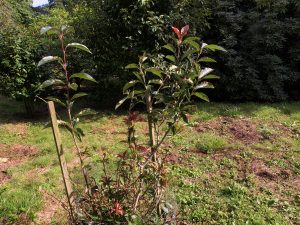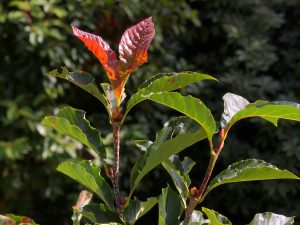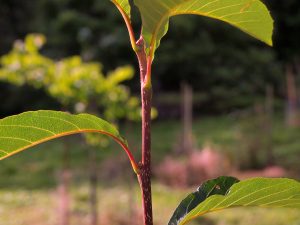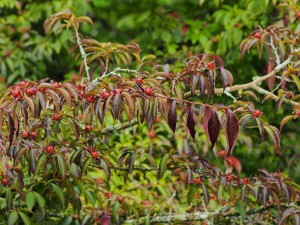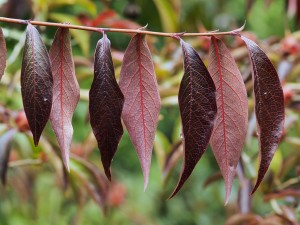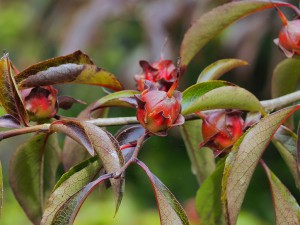2025 – CHW
Jaimie’s picture of the crane in action on the drive a few days ago.
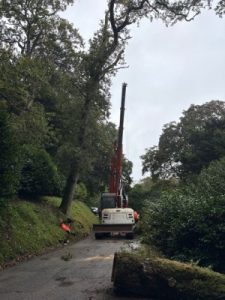
To the greenhouses where there are already 5 species of camellias in flower.Myricaria germanica has grown exponentially over the summer. A Mark Bulk purchase from last winter. Feathery foliage but horrid prickles.
2023 – CHW
Magnolia seed heads already ripe and shedding in September. Not unusual for M. sinensis or M. wilsonii in September but very early for tree magnolias. This one is Magnolia ‘Mr. Julian’.
2022 – CHW
I thought I would share with you here our reasoning behind the plans to replant the new cleared old Kitchen Garden with a collection of flowering Malus species and varieties.
Clearance of the conifers planted in the Kitchen Garden in the late 1950s by my father had been scheduled and planned for the spring of 2020. The pandemic delayed the start of the work until February 2022. It was undertaken by two local contractors based and living on the Caerhays Estate who completed the work in May after a wet weather delay in March.
For some years we have all been considering the possible uses and planting plans for the Kitchen Garden to enhance the visitor experience in the spring open season (currently) from mid-February to mid-June each year.
The conifers were planted originally to put an end to vegetable production for the castle which was then being undertaken by two elderly garden staff. The operation of a vegetable garden supplying the house was obviously uneconomic then and remains so today. The old kitchen garden was and is inaccessible to machinery and far too far away from the main house to ever be an integral part of the main garden. The vegetable gardens at the Lost Gardens of Heligan are very much part of the historic house and gardens and sit in close proximity. The situation at Caerhays is very different.
We therefore rejected the idea of restoring a working fruit and vegetable garden to its former status on the grounds that it would still be totally uneconomic. Even with huge capital investment in the full restoration of the greenhouses, storage and potting sheds vegetable production would still be impractical in this location.
A better approach seemed to be to create something totally new and different for visitors to the 140 acres of woodland gardens. Consideration was given to a collection of Chilean native plants but rejected on the grounds of wind and frost exposure in the valley in which the old kitchen garden sits. Many Chilean plants are frost tender.
We then thought about what Caerhays has very few of in terms of Asiatic/Chinese plant introductions from the early 20th century which might form a new collection that might, one day, grow on to become another Plant Heritage national collection. Caerhays are already one of the holders of a national collection of magnolias (Magnoliaceae) and, also, Podocarpus (Podocarpaceae). We settled on malus as being the genus least well represented here but the plan is for flowering and fruiting (or non-fruiting) crab apples rather than apple trees themselves. Malus fit well into the woodland garden flowering season here as they perform in May and early June. Long after the Asiatic magnolias pass their best and well after most of the cherry trees (prunus) leading to the old kitchen garden have finished flowering.
Thus, late season visitors to Caerhays would have something spectacular and completely new to look at. There is only one other national collection of ornamental malus in Kent which specialises in varieties of eating apple rather than flowering ‘crabs’. A list of the malus which have already been acquired together with a list of those species and named varieties offered by various nurseries is attached. A national collection does not happen overnight and it may well take years to assemble (and grow from seed) all the wild species and more modern hybrids from many countries around the world. The qualification process to become a national collection is not easy but it can certainly be an aspiration for a historic woodland garden like Caerhays.
The plan will be to plant in groups of three of the same variety with spacings and the final layout determined by ultimate size and the necessary space for each to mature. Several crabs are well suited to training on the old kitchen garden walls in the same way as apples, pears and peaches might have been pleach trained in traditional kitchen gardens. By no means all crabs turn into small trees and some remain shrubby.
All however need a hot and warm environment to thrive. Exactly what the now cleared old kitchen garden currently offers. Malus seem a sensible compromise for a traditional food producing kitchen garden being turned into something well in keeping with its historic origins.
Obviously the Kitchen Garden will need something else for visitors to enjoy earlier in the spring. In the 1880s and 1890s JC Williams, my great grandfather, was heavily involved in the breeding of early flowering and other Cornish daffodil varieties. In his lifetime he produced thousands of new varieties and at least 50 remain available today in commercial daffodil production by large and small specialist growers. The plan is to reintroduce as many of these original daffodil varieties to the restored old kitchen garden as possible over time.
Natural England and English Heritage offered generous grant support towards a number of capital restoration projects at the start of a new 10 year ELS/HLS agreement with Caerhays Farms in 2013. A large part of the grant was used towards renovation of the then derelict old dog kennels directly below the Kitchen Garden wall. Major repairs were also completed to the eastern garden wall and smaller repairs and wall capping was possible on the southern and northern walls. Work was obviously hampered by access difficulties. These have now been removed with full clearance of tree and scrub cover both within the garden and outside it.
The estate’s formal undertakings to Natural England / English Heritage from 1992 included ensuring that any derelict buildings did not fall into even greater disrepair. This proposal is the latest in a long series of restoration projects stretching from the Vean (derelict), the Nash arch in Battery Walk and repairs to the tower on the castle lawn.
Without grant funding in 2013 the Kitchen Garden walls would be in a far worse state than they are today.
With the clearance and replanting plan envisaged here, the old kitchen garden now has a purpose and objective going forward. Old Park wood was opened to the public for the first time in 2013. The old kitchen garden should be able to follow the same course by 2024 when replanting is complete. If further grant support was forthcoming to repair and stabilise more of the old walls then public access might have to wait until this work was complete.
2021 – CHWAn examination of the berries on our 2019 planted Cotoneaster species collection. Around two thirds had berries of some sort. Three or four species had as yet unripe berries and one had berries dropping. Many of the names are unpronounceable.Cotoneaster wilsonii which performed well last year is a standout species.
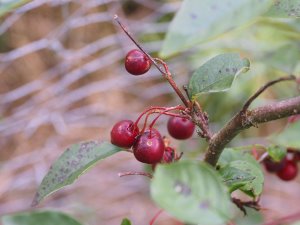
2020 – CHW
The peculiar and decidedly nasty climber from New Zealand, Rubus squarrosus, has found a home in a shady corner by the front gate. In three years it has developed in size enormously and you can clearly see its long new shoots. Gloves essential!
With no rain for a fortnight and hot weather not an ideal time (yet) to be fungi hunting with the new book.
Crataegus schraderiana now has fully ripe berries and is a really good show.
2019 – CHW
A sudden strong easterly wind has downed all the beech mast and sweet chestnuts all over the drive. This made me wonder if there were any ripe fallen acorns on Quercus lamellosa but sadly they had all fallen a month or so ago when still immature and not really anywhere near ripe. Conversely the large Quercus acuta above Rogers Quarry still has plenty of larger acorns still in place on the tree and not yet ripe enough to drop in the wind.
Despite being cut back in the spring Buddleia lindleyana has reshot vigorously and is now in flower. What a colour!
Tiny cones forming on Saxegothaea conspicua on just the odd branch. Quite a surprise as I had thought that ‘Prince Albert’s yew’ had berries? The reference books say these cones are in fact soft and prickly ‘fruits’ so there we are. Well worth a look in a week or two as I have never seen this before on any of our several young trees or the record tree at Tregullow gardens. I should ask James Williams.
David West from Fromefield Nurseries thought this was Cotoneaster frigidus ‘Inchmery’ when I photographed it last year. The fruit is not plentiful and certainly is not ripe yet but it is yellow now and seems to want to turn pink. I must remember to send fruits to David.
A new to us Daphniphyllum glaucescens has made an excellent small tree. Very different leaf structure to other species and clearly likes being in full sun.
2015 – CHW
A few seeds and berries today.
Stachyurus praecox, although nibbled by deer, is displaying large green seedpods on long tassels. Strangely next spring’s new flower spikes are already much in evidence.
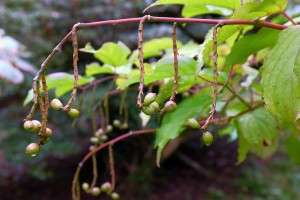
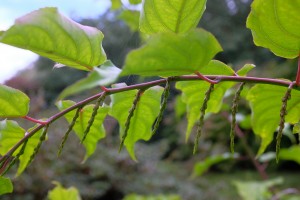
Sorbus folgneri ‘Emiel’ has fruits forming in profusion but they have yet to turn orange and red. One to look out for if the pheasants leave them alone.
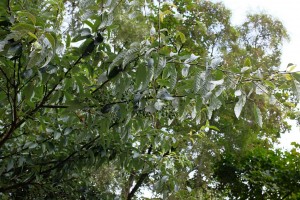
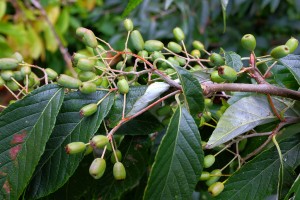
2005 – FJW
Picked the first Camellia sasanqua flower.
1998 – FJW
Harvest complete. Latest for a long time.
1917 – JCW
Just as above, the rhodo’s now open are Decorum, Neriiflorum, Scintillans, Felonateium, 10278, Flavidum, Intricatum, Rupicolum, Hippophaeoides, Trichocladum, Fastigiatum and Barum (=10423).
1916 – JCW
Hydrangeas, cyclamen and cassia are all good. Lapagerias nice, several (6-7) species of mountain rhodo’s in flower.




